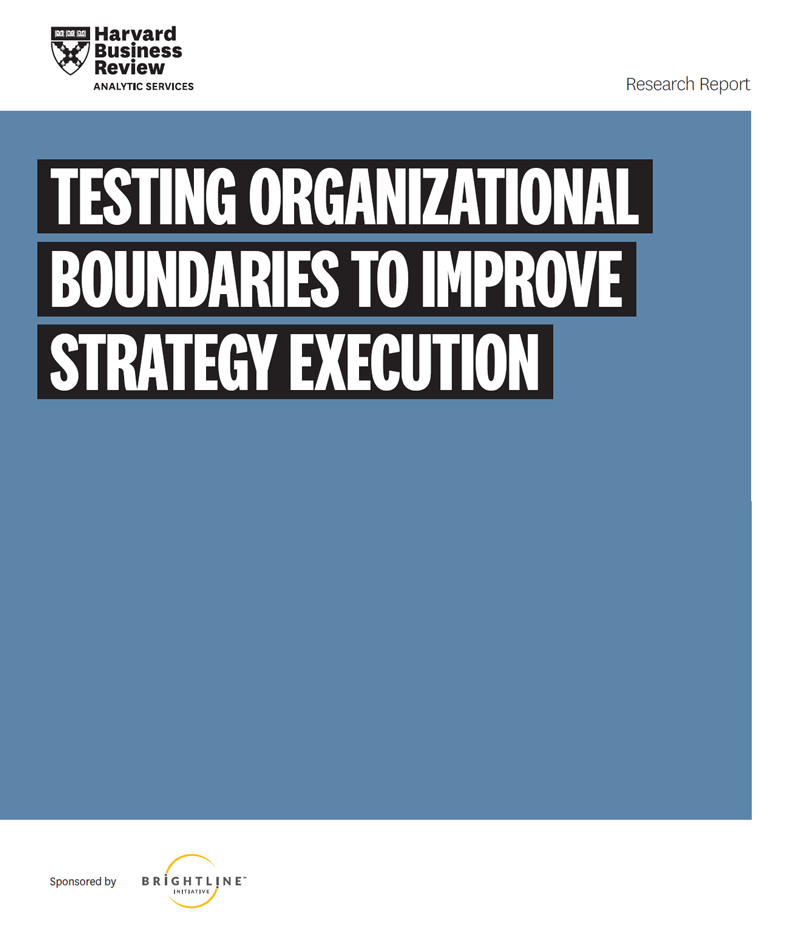Testing Organizational Boundaries to Improve Strategy Execution
Culture beats structure. To discover how organizations can change how they work and optimize their strategic execution, Harvard Business Review Analytic Services surveyed 1,636 executives worldwide. Read the findings.

Most organizations struggle with executing strategy in their ever-changing environments. Organizations are continuously evolving their roles, functions, and structures. So many of the best ideas on paper never even make it into the marketplace.
A global executive survey conducted by Harvard Business Review Analytic Services, in association with the Brightline Initiative, found that roughly one-fifth of organizations achieve 80% or more of their strategic targets. These organizations are also able to quickly adapt to new or unexpected market changes, competitor moves, and new customer demands. The secret of their success? These implementation leaders have found ways to overcome common organizational silos and foster more agile ways of working.
To discover how organizations can change how they work and optimize their strategic execution, Harvard Business Review Analytic Services surveyed 1,636 executives worldwide. Among the findings:
Cross-functional teams decentralize decision making, regardless of the structure type. The majority of implementation leaders agreed their organizational structures help them carry out strategy. Just as importantly, centralized decision making is present in only 16% of implementation leaders, compared to 24% of followers and 29% of laggards.
A culture of collaboration is actively pursued and rewarded. Because leaders want to foster the use of cross-functional teams to put strategic initiatives into action, nearly 80% of implementation leaders, versus a scant 19% of laggards, encourage and reward collaboration.
Executives must be engaged with those around them, coaching just as much as leading. Forty-three percent of implementation leaders strongly agreed about the importance of senior executive engagement and coaching in their organizations, compared to just 19% for those considered to be followers and 13% for those characterized as laggards when it comes to strategic execution.
Strategic development and delivery is a dynamic, always current activity. Forty-four percent of implementation leaders say the development and delivery of strategic initiatives is a dynamic and continuous process, which isn’t the case for followers (35%) or laggards (23%). In contrast, nearly one-third (31%) of laggards revisit strategic aims only every two years versus 10% of leaders.